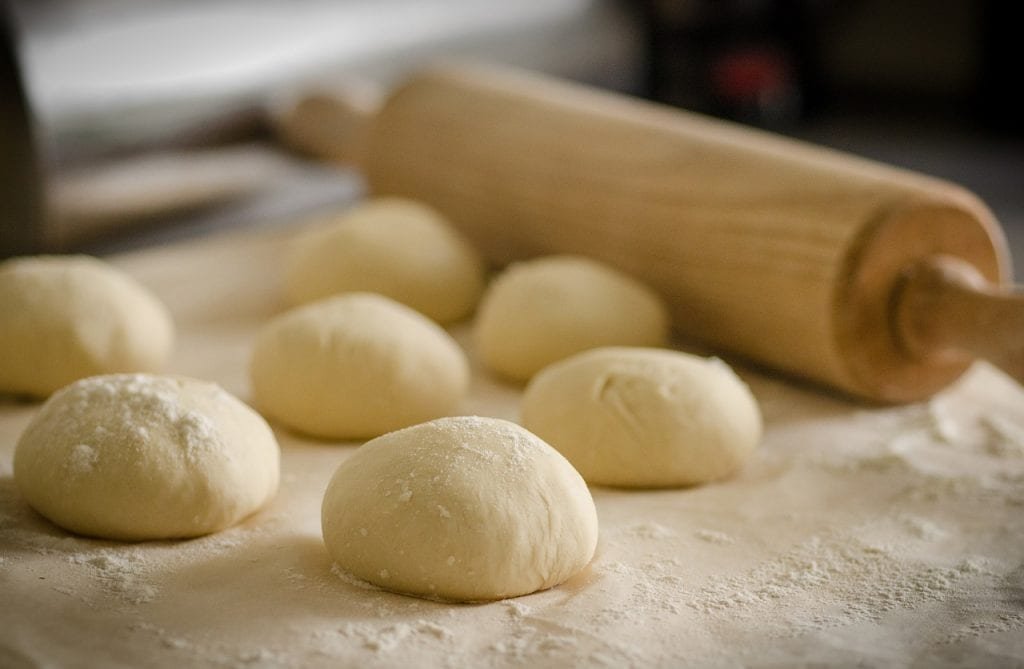Pizza, an iconic dish originating from Italy, has various regional styles that reflect the diverse culinary traditions of the country. Among these, Roman pizza stands out as a distinct variation, differing significantly from its Neapolitan counterpart. This article explores the unique characteristics of Roman pizza, focusing on its dough, toppings, and baking style, and how these elements differentiate it from Neapolitan pizza.

Characteristics of Roman Pizza
Roman pizza comes in two primary styles: Pizza al Taglio (pizza by the slice) and Pizza Tonda (round pizza). Each style has its own set of defining characteristics, but both share common traits that set them apart from Neapolitan pizza.
Pizza al Taglio
Pizza al Taglio, or pizza by the slice, is a popular street food in Rome. It is baked in large rectangular trays and sold by weight, making it a convenient and flexible option for a quick meal.
- Crust: The crust of Pizza al Taglio is thicker and crispier than that of Neapolitan pizza. It has a light, airy texture due to the high hydration level of the dough, which creates large bubbles and a crunchy exterior.
- Toppings: This style of pizza allows for a wide variety of toppings, from traditional combinations like tomatoes and mozzarella to more creative options such as zucchini blossoms, potatoes, and truffle oil.
- Baking Style: Pizza al Taglio is typically baked in an electric oven at a lower temperature than Neapolitan pizza, which contributes to its crispy crust.
Pizza Tonda
Pizza Tonda, or round Roman pizza, is another popular style in Rome. It is often enjoyed in pizzerias as a sit-down meal.
- Crust: The crust of Pizza Tonda is ultra-thin and crispy, often described as “cracker-like.” It lacks the chewy, airy texture of Neapolitan pizza and is more uniformly cooked throughout.
- Toppings: While Pizza Tonda can feature similar toppings to Neapolitan pizza, it often includes more ingredients and combinations, such as capricciosa (mozzarella, mushrooms, artichokes, ham) or diavola (spicy salami).
- Baking Style: Pizza Tonda is baked in a wood-fired or gas oven at high temperatures, but not as high as those used for Neapolitan pizza. This baking style ensures a crisp, evenly cooked crust.
Dough Preparation
The dough preparation for Roman pizza is a critical factor that distinguishes it from Neapolitan pizza.
Roman Dough
- Ingredients: The dough for Roman pizza typically includes flour, water, yeast, salt, and sometimes a small amount of olive oil. The addition of olive oil helps achieve the desired crispy texture.
- Hydration: Roman pizza dough, especially for Pizza al Taglio, has a higher hydration level (up to 80%) compared to Neapolitan dough. This results in a lighter, airier crust with a distinct crunch.
- Fermentation: The dough undergoes a long fermentation process, often 24-48 hours, which enhances its flavor and digestibility. This slow rise allows for the development of complex flavors and a lighter texture.
Neapolitan Dough
- Ingredients: Neapolitan pizza dough consists of flour, water, salt, and yeast. It does not typically include olive oil.
- Hydration: The hydration level of Neapolitan dough is lower, around 58-65%, which contributes to its soft, chewy texture.
- Fermentation: Neapolitan dough also undergoes a slow fermentation process, usually 8-24 hours, to develop its characteristic flavor and texture.
Baking Style
The baking style is another significant difference between Roman and Neapolitan pizza.
Roman Baking Style
- Oven Type: Pizza al Taglio is often baked in electric ovens, while Pizza Tonda can be baked in wood-fired or gas ovens.
- Temperature: The baking temperature for Roman pizza ranges from 250°C to 300°C (482°F to 572°F), lower than the temperatures used for Neapolitan pizza.
- Cooking Time: Roman pizzas are baked for a longer period, around 10-15 minutes, which contributes to their crispy texture.
Neapolitan Baking Style
- Oven Type: Neapolitan pizza is traditionally baked in a wood-fired oven.
- Temperature: The oven is heated to extremely high temperatures, around 485°C (905°F).
- Cooking Time: Neapolitan pizzas cook very quickly, typically in 60-90 seconds. This rapid baking process results in a soft, pliable crust with charred spots.
Toppings and Flavor Profile
Roman and Neapolitan pizzas also differ in their approach to toppings and overall flavor profile.
Roman Toppings
- Variety: Roman pizzas often feature a broader range of toppings, including non-traditional ingredients like potatoes, anchovies, and truffle oil.
- Layering: The toppings are usually spread more thinly and evenly across the pizza, ensuring each bite has a balance of flavors.
Neapolitan Toppings
- Simplicity: Neapolitan pizza focuses on a few high-quality ingredients. The classic Margherita, for example, includes San Marzano tomatoes, mozzarella di bufala, fresh basil, and olive oil.
- Flavor: The intense heat of the wood-fired oven enhances the natural flavors of the toppings, creating a rich, harmonious taste.
Conclusion
In conclusion, Roman pizza, with its distinct styles of Pizza al Taglio and Pizza Tonda, offers a delightful contrast to the soft and chewy Neapolitan pizza. The differences in dough preparation, baking style, and toppings highlight the regional diversity within Italian cuisine. Whether you prefer the crispy, airy crust of Roman pizza or the tender, flavorful bite of Neapolitan pizza, both styles celebrate the artistry and tradition of Italian pizza-making.




